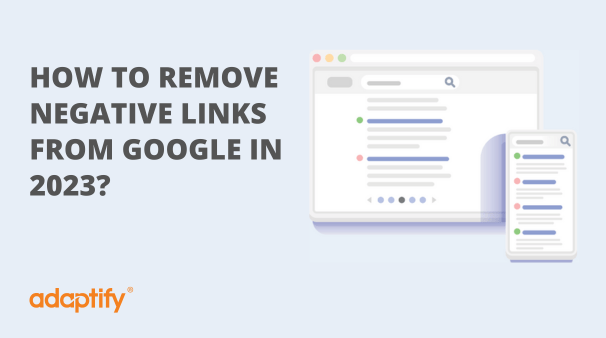- For starters, the majority of shoppers (87%) search for a product online. If you are not visible where your buyers are, they are likely to make the purchase from your competitors.
- eCommerce SEO yields the highest ROI than any paid search or social media campaign. For another, it involves a far less recurring budget.
- On top of that, a SEMrush study shows that organic traffic makes up 38% of all website traffic - irrespective of business size and industry of operation.
- The #1 result in Google’s organic search results has an average CTR of 31.7%!
Therefore, if you have a responsive eCommerce website with eye-catching images and content that explains your products simply and clearly, you are already off to a good start.
Often eCommerce businesses are not so lucky with SEO, and they see it as a daunting task in hand. Sure, it takes time. You will have to put in work to reap the rewards.
A good SEO strategy is extremely important in making your eCommerce brand visible to potential shoppers. Let’s give in.
The 7 eCommerce SEO best practices for your online store are:
- Keyword research
- Site architecture
- On-page SEO
- Technical SEO
- Content marketing
- Link building
- Measuring SEO success
1. eCommerce keyword research

On the other hand, if you specialize in making sweaters from sustainable wool, targeting the long-tail keyword “sustainable wool sweaters” will give your eCommerce store a better chance to rank higher.
Targeting the right long-tail keywords enable you to get higher quality website visitors who are closer to making a purchase. These are people who have done some research and know exactly what they want. Detailed keywords will bring you high quality leads with a higher conversion rate.
Also, shorter keywords will be dominated by well-established brands. When competing with them, it is unlikely that you will get much visibility for the same keywords.
Tip – Paying to advertise long-tail high user intent keywords is cheaper as they have less competition than the shorter more popular keywords.
Top keyword tools
- A Google search
- Google Trends
- Google Keyword Planner
- Ahrefs
- RankWatch
- SEMrush
- Ubersuggest
- Keyword Tool.io
2. eCommerce site architecture for SEO
A fundamental part of a successful eCommerce SEO strategy is to optimize your website’s architecture. Simplify its structure for usability (for the website visitor) and crawlability (by search engine bots). Make the navigation of your eCommerce website user friendly and search engine friendly.
How? By organizing your eCommerce website such that it enables the visitors to make a limited number of clicks (3 or less) to reach a product page from the homepage.
When you do this, your user experience improves and the bounce rate reduces. Eliminate frustrating navigation on the website.
For the purpose of SEO, an optimized site structure makes it easier for search engines to crawl your website and preserve the link authority. This is an important factor that Google takes into account while ranking a website. The more a product page is away from the homepage, your link authority becomes diluted. Concentrated authority helps your eCommerce web pages rank higher.
Here’s the kind of website architecture you should avoid, as per Backlinko.
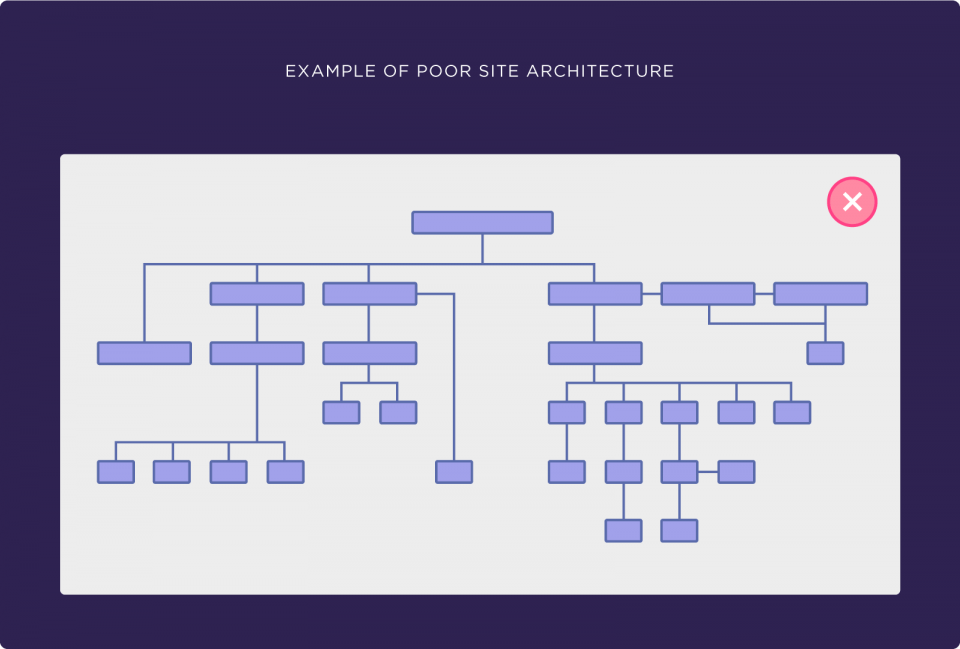
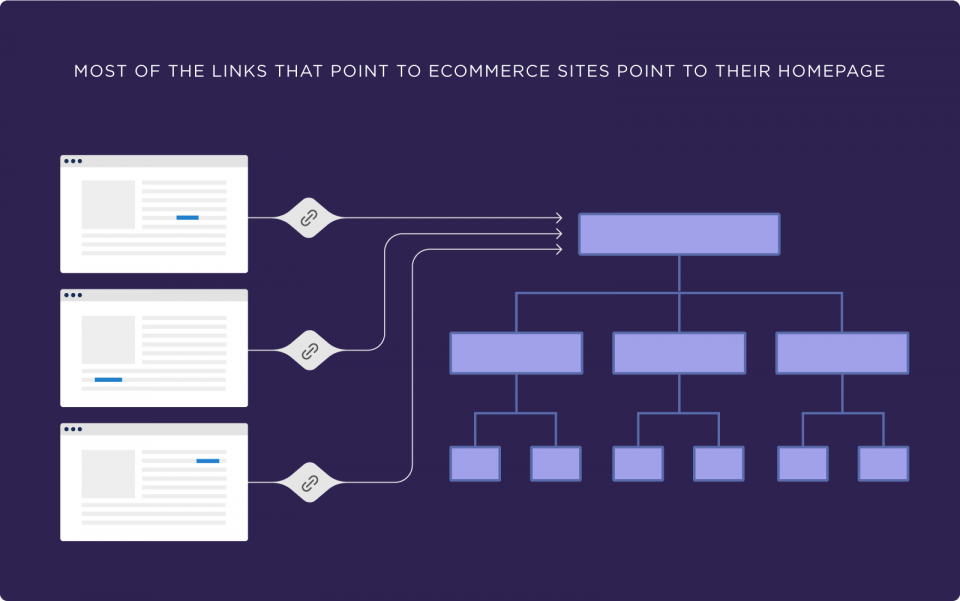
Here’s an example from Adidas, who have done a great job at keeping their site architecture as flat as possible. They have different product categories and lines.
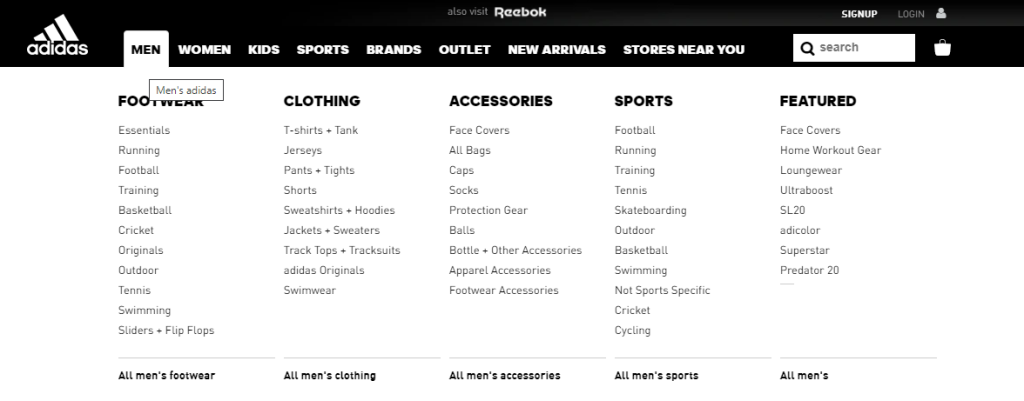
They have categorised their products based on gender. They also allow you to click on more specific subcategories simply by hovering and clicking over it. For customers who look for different things, they have categorised by sports and brands. This is to narrow down their search from the homepage.
3. On-page SEO for eCommerce websites
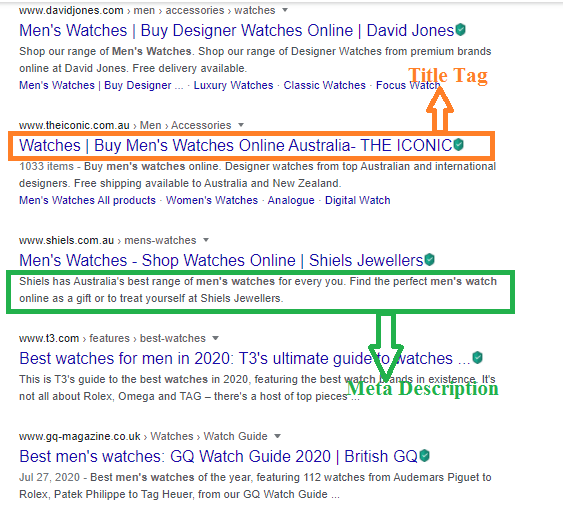
5. Optimize the URLs – Your eCommerce website URL showcases your brand. Keep it short so that it is easy to remember. Maintain their consistency.
4. Technical SEO for eCommerce websites
There are broader technical terms you need to take care of, in addition to on-page SEO. Your website speed, mobile-friendliness, user-friendliness and link reliability all play a significant role in determining your ranking. To start with your eCommerce SEO audit, use a crawling tool such as Screaming Frog to check for thin content, broken links, or missing metadata/alt text.
While Shopify and other eCommerce platforms take care of these elements, you should be aware of them. The technical SEO elements for eCommerce websites are:
1. Sitemap – Consider the sitemap equivalent to a blueprint that shows Google the architecture of your eCommerce website.
2. Duplicate content – If your website has multiple pages that are almost the same, Google’s algorithm would be unsure of which ones to rank for the target keywords.
This happens when product descriptions are copy-pasted for similar items or if there is templated content repeating on every page.
3. Broken links – Find the broken links and remove them. They act as dead-ends for your customers and search engine crawlers that index your website.
4. Structured data – Also called schema markup, the structured data is an HTML markup on your page that enables Google to identify information that is displayed in the form of featured snippets.
For an eCommerce website, the schema considerations include the product review, ratings, price, product availability and video.
5. HTTPS – Use HTTPS to make sure your site is secure. URLs that begin with “HTTP” indicate they don’t encrypt any communication between the user and the website. This could be detrimental when payment details are involved, as in the case of an eCommerce business.
6. Indexed web pages – Another way to evaluate your technical SEO is to search for your business on Google using the “site:” operator and checking whether the number of your indexed web pages is fewer than the number of URLs in your site crawl report.
If the number is higher, it could indicate junk pages being categorised, and you should go ahead and noindex them.
Tip – Technical SEO requires constant considerations and maintenance that are deeper than this list. Hire an eCommerce SEO agency to monitor these SEO suggestions
5. Content marketing for eCommerce sites
Content marketing has consistently been shown to be useful. Not only do marketers and customers trust it more, but it is also one of the easiest ways to build up backlinks, rank for more keywords and build your domain authority.
Moreover, focusing on long-form blog posts that inform customers about what they are looking for is even more effective than just product/category pages. From ranking high on search engines to spread brand awareness, blogs are a handy asset.
There is a wealth of guidance out on the internet about how to optimise your content marketing, from choosing the right keywords to crafting top-notch headlines to repurposing your content for different platforms.
This article, for instance, will walk you through how to write a highly effective blog post. You can even take the help of content creators at Adaptify to build a blog bank for your eCommerce business. You won’t be disappointed!
6. Link building for eCommerce websites
Link building, in many ways, is as important as high-quality content. The more your website is cited in high-authority pages and blogs; the more your authority goes up, the more traffic you get and the higher your website ranking jumps.
You can reach out to influencers or “round-up” websites in your industry space and ask to be featured, either for a product you sell or for a post you have written. You can also do paid partnerships with bloggers and influencers in return for them to mention your eCommerce store on their page.
In addition, Ahrefs allows you to check out the backlinks on your competitors’ pages so that you can “copy” their links and push up your own authority.
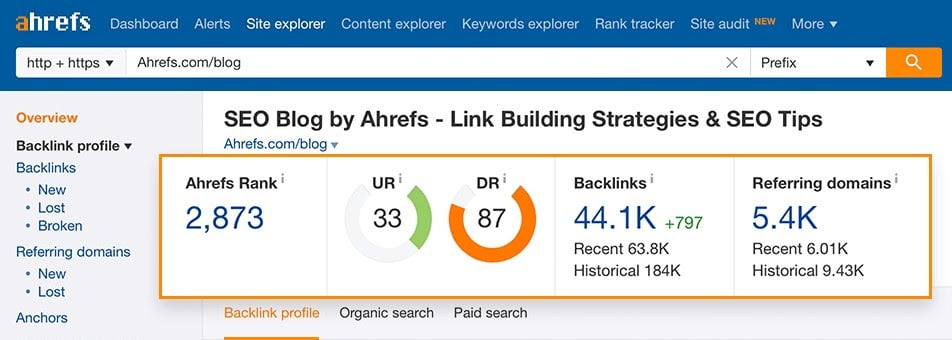
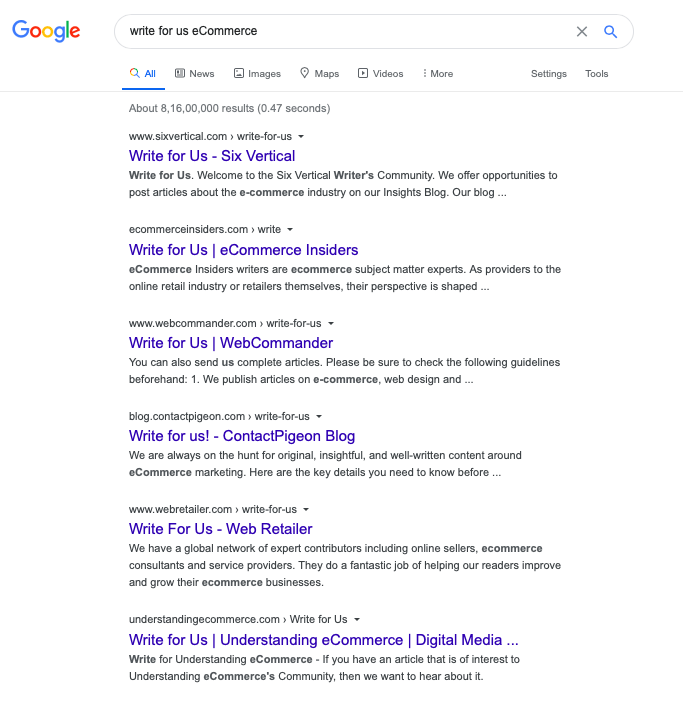
When you identify the target portals, be sure to study their guidelines to draft a desirable article outline and custom-create each pitch to increase your pitch’s chance of getting accepted. Link building is a time-consuming exercise, but it not only boosts organic search rankings but also makes you appear as a thought leader in the industry!
7. Measuring SEO performance of eCommerce sites
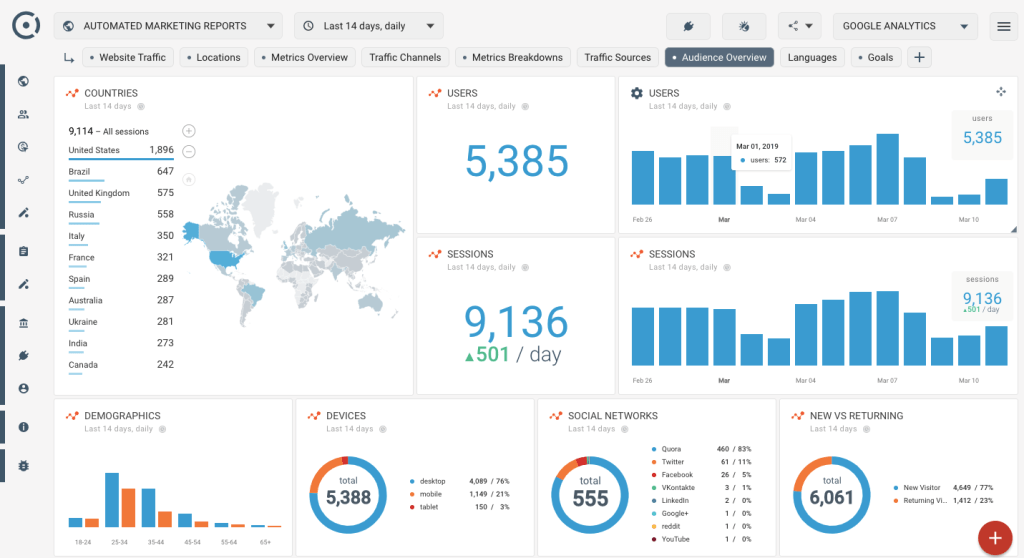
Over to you
For any eCommerce business, building an SEO strategy takes time but when executed properly and monitored consistently, it fetches organic search results. You can achieve higher CTRs and sales than through paid search.
So, what are you waiting for? Follow each of the recommendations shared in this article and let your eCommerce business always stay ahead of the SEO curve.
Find a trusted eCommerce SEO partner in Adaptify
Do you want to focus on running your online store without having to worry about your SEO campaign?
If yes, partner with an experienced eCommerce SEO agency to monitor and manage your campaigns. One of the best SEO companies in Australia, Adaptify is more than capable of boosting your eCommerce website’s traffic.
With our SEO services that are top of the line, we’ll help you optimize your product pages, page speed, blog content and more, to drive traffic to your eCommerce store.
Count on our experts to create an eCommerce strategy that takes your online business to new heights.










